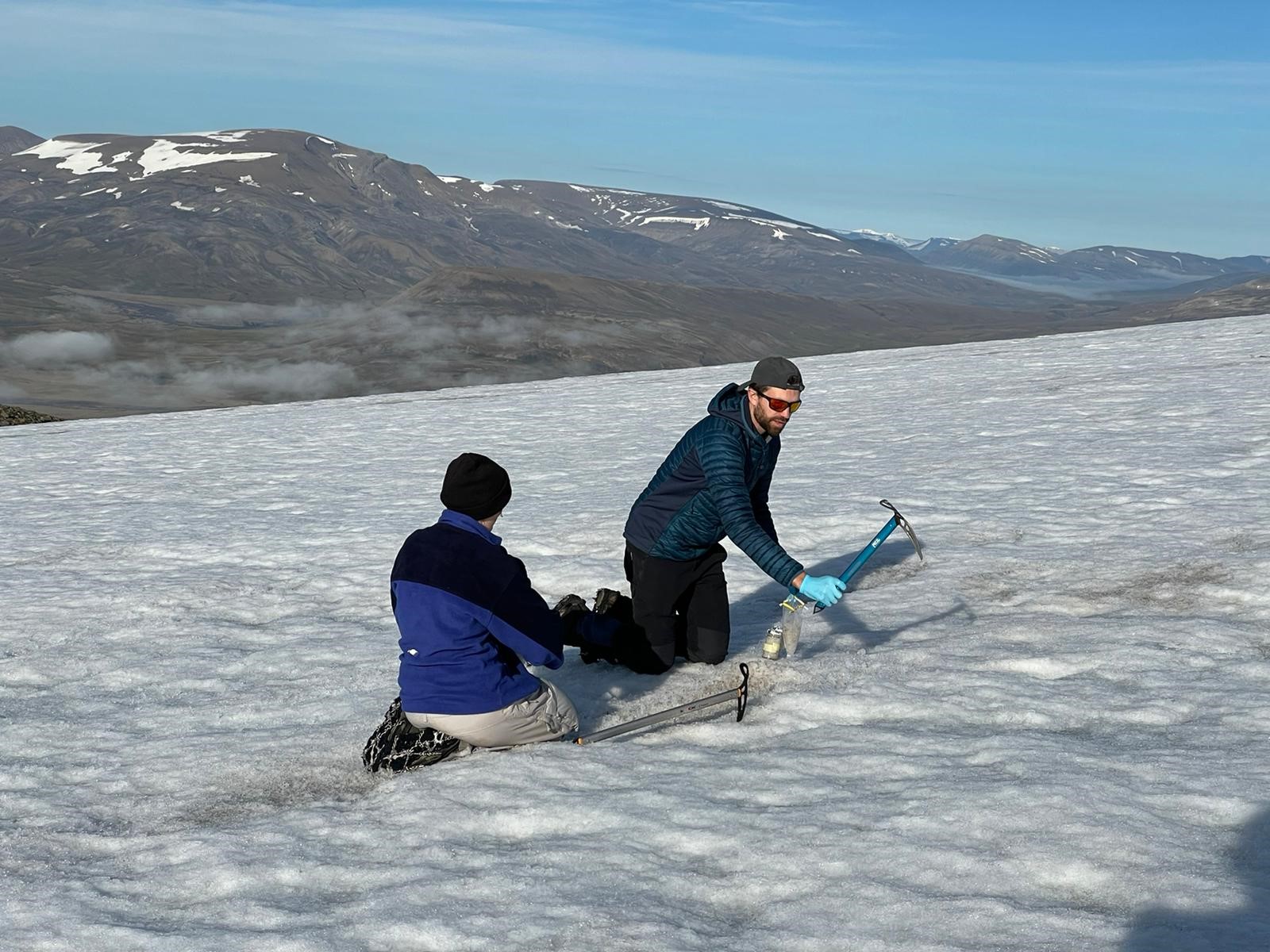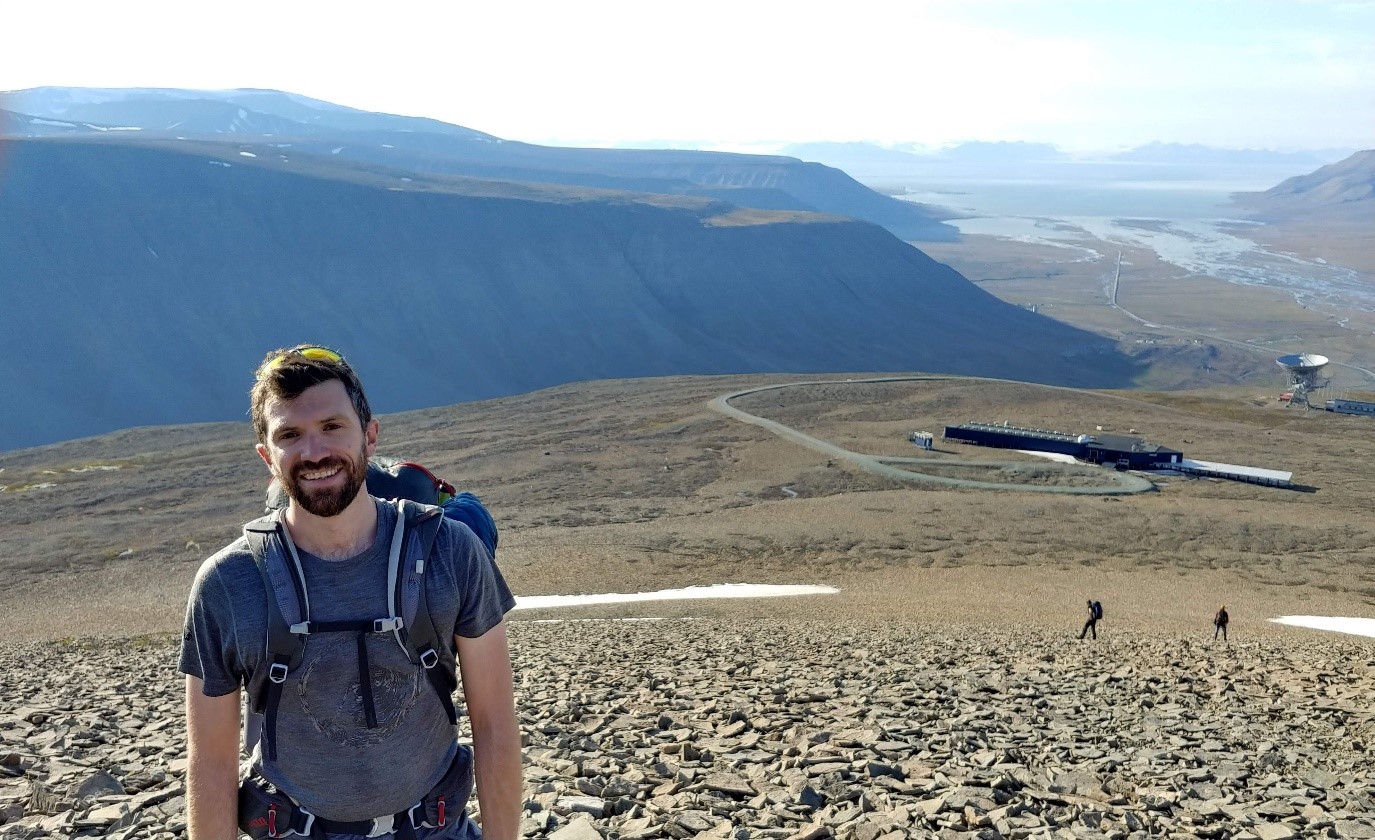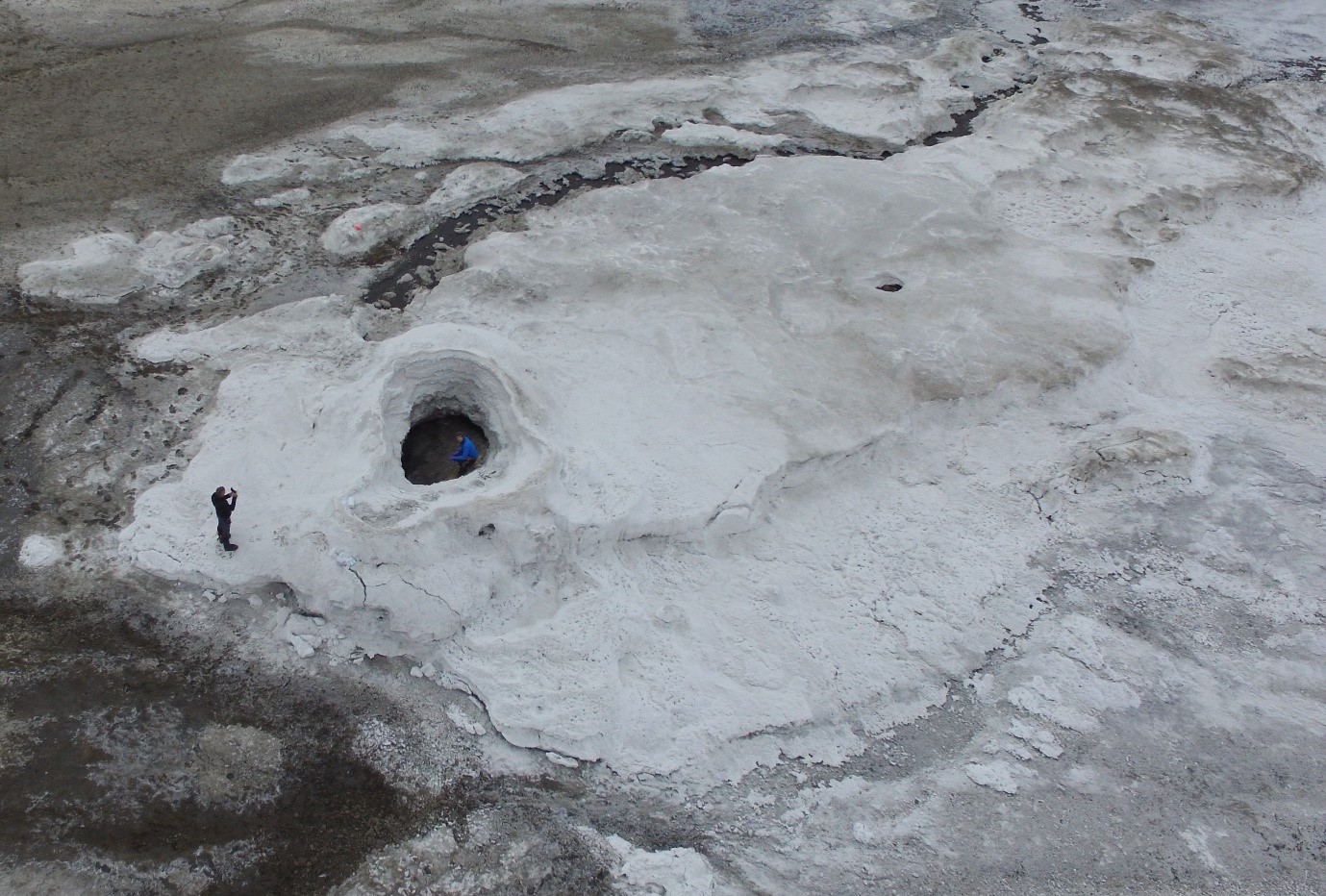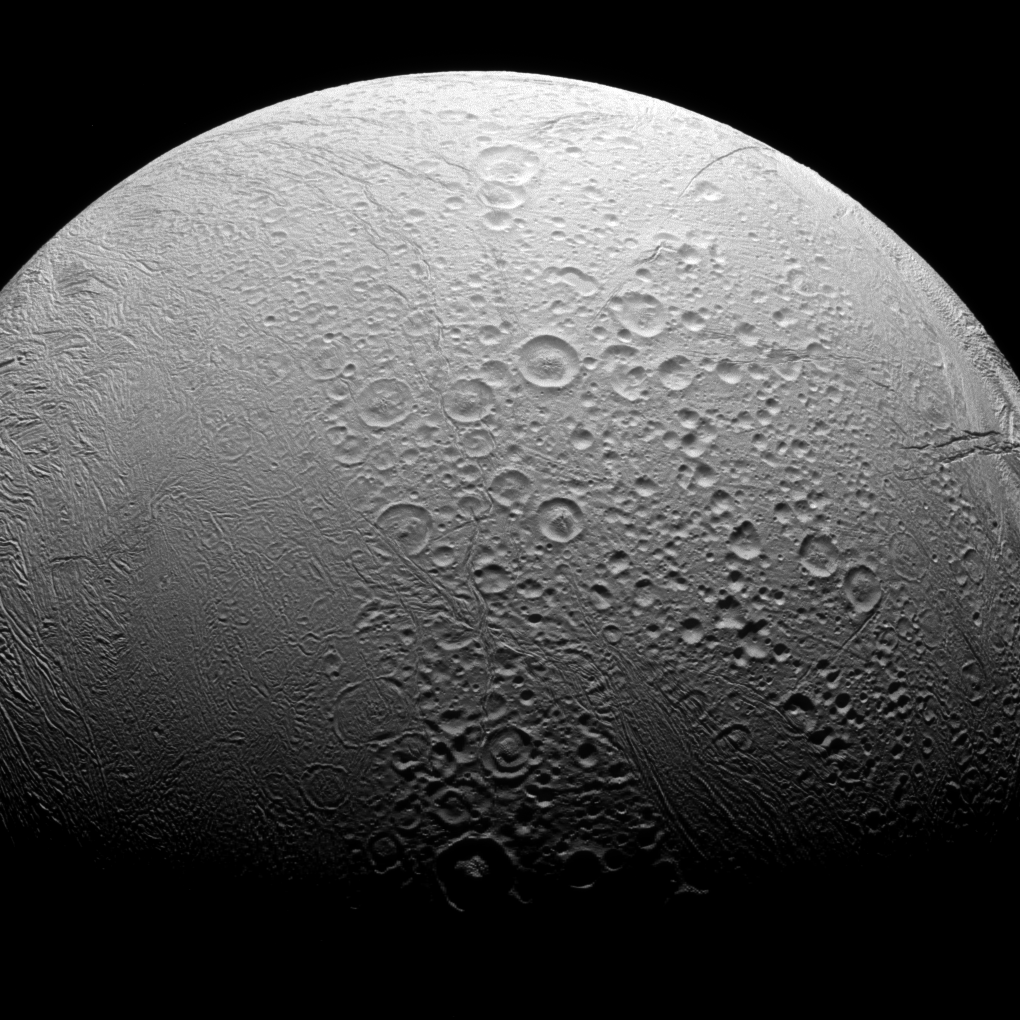‘Astrobiology’ isn’t a subject you can study at school. Can you tell me a little bit about your journey to astrobiology and how you arrived where you are now?
By accident! Since childhood, I’ve been interested in in the big questions about where we come from, the evolution of life on Earth, the origins of life on Earth … life as a consequence of planetary evolution, almost, although I wouldn't have thought about it in those terms then. After school I spent time on a conservation project in Mexico, working on coral reef ecosystems. That got me interested in marine science and I did my first degree in marine biology. But in the background, I was still interested in those big questions.
I think I was first exposed to astrobiology when I watched a BBC documentary that included a few people from NASA who called themselves ‘astrobiologists’. Something clicked in my head and I knew that was what I wanted to do. I had no idea you could do a PhD in astrobiology; my plan at the time was to focus on microbiology and work my way towards astrobiology. But then I saw an advert for a PhD in astrobiology at the University of Edinburgh. It involved topics that were very alien to me but there was something about it; something I couldn’t stop thinking about, so I applied and got the post.
 Fieldwork on Svalbard, August 2021.
Fieldwork on Svalbard, August 2021.
And now you are an astrobiologist at The Open University, what does astrobiology mean to you?
There’s a tendency to see astrobiology as ‘the search for life’. But that's not how I see it. ‘Searching for life’ implies that astrobiology’s goal is finding life. And if we don't find it, then we've failed. But for me, the goal is to try to understand life in its cosmic context; to understand how common or rare life really is.
Take the icy moons for example. The icy moons are weird, exotic, mysterious worlds, very different to Earth. I want to explore those alien worlds, to understand what they mean for the potential for life and what they can tell us about our own origins. If we find that the icy moons, the ocean worlds like Europa and Enceladus, don’t have any life and never did, that tells us something. It tells us that our understanding of how life originates is incomplete, that the Earth has something these other places don’t have.
On Earth, exploring exotic places often tells us something about our own home place. Does the same apply to planetary exploration?
Planetary exploration is key to understanding the Earth, how it functions and why we are here. If we knew more about other planets and the different trajectories they have followed as they changed over time, we might understand more about the Earth’s systems. If we can understand the Earth in terms of the history of the solar system, we might understand more about the extremes to which things can go, about how planets react when the climate or the atmospheric composition is drastically changed.
For example, Venus is currently a high-pressure hothouse, a kind of extreme extrapolation of climate change. But it could have been very different, possibly more Earth-like, billions of years ago. Studying Venus shows us what's possible and more than that, it shows us how that kind of change happens; how a big, complicated system like a planet can be pushed in a certain direction. We can use that knowledge to inform how we interpret changes happening on the Earth now.
 Mark getting ready for fieldwork on Svalbard, August 2021
Mark getting ready for fieldwork on Svalbard, August 2021
Your research focuses on the oceans of the icy moons of the outer solar system. What interests you about them? What do you hope exploring them can tell us?
The deep oceans of the icy moons are the places in our solar system that are most likely to be habitable in the present day. The oceans have gradients of chemical energy (exactly the same kinds of energy gradients that we know support life on Earth) that could be exploited by life. It’s incredibly exciting – there could be biospheres in these oceans. And if we find evidence of life there, it will be evidence of life now, not fossil evidence of life that lived billions of years ago. But whether they do or don’t hold life, these oceans have a lot to teach us about how water and rock interact and the kinds of chemistry that might come from that, which might include prebiotic chemistry, a precursor to something like life.
The oceans lie beneath a thick ice shell – on Jupiter’s moon Europa, the ice is perhaps 20km thick. But the transition between water and ice on Europa is very gradual, unlike the sharp change we see on Earth. Europa might have a flexible layer of ice beneath a more brittle, crusty surface. In that transition zone there could be chemicals from the deep ocean coming up, and chemicals from the surface coming down; these gradients are the potential habitats for life.
My research is all about understanding that link between the ocean and the surface through the ice shell. The big question is to what extent the surface of these moons represents their ocean. How much of the ocean is really represented on the surface? Are we looking at something that is effectively just a frozen version of the ocean, or is there something, some process, by which the surface is an evolved or changed version of the ocean?
How do you investigate this experimentally?
When salty water freezes, the salts that were dissolved crystallise and turn into minerals, which get trapped in the ice. This happens in characteristic ways that depend on the chemistry of the original water, so the salts that have frozen into the ice tell us about the water that they originally formed from.
In the lab I study equivalents of the kinds of minerals we might expect to find on the icy moons. I simulate freezing under a variety of different scenarios – different temperatures, different gradients, different cooling rates – then use a range of instruments to gather data on the composition of the minerals. For example, I use electron microscopes to look in detail at the textures of ice samples. I look at where different types of salts accumulate and how the minerals are distributed within the ice, because that might have implications for how much fluid is transported up through the ice or how much drains back down into the oceans of the icy moons.
The end goal is to build a computer model that predicts this behaviour. Then we can go to a natural system and check our predictions. It’s a loop: experiment in the lab, model in the computer, test in the field, realise they don’t quite fit, back to the lab. The simulations we set up in the lab are simple systems, pared-down versions of reality. A natural environment is messy. It's got all this crazy stuff going on that you would never predict or anticipate. But I can use the messiness as a way of testing my understanding. Regardless of whether you're in the Arctic or on the shell of an icy moon, the same kinds of chemistry should be occurring. The chemistry itself should be transferable, although the two environments are very different.
Fieldwork sets up a natural laboratory where I can test some of the theories I work on in my simulations. On Axel Heiberg Island, in the Canadian High Arctic, which I visited in 2017, there are incredibly salty brine springs, so salty that they don’t freeze in the winter. Instead, huge deposits, absolutely beautiful terraces of salt minerals, form around the springs. The terraces are made of a type of salt which only forms in cold temperatures and the really interesting thing is that they are the types of minerals we expect to find on icy moons such as Europa. And this year, I was fortunate to be able to travel to Svalbard, in the Norwegian Arctic, to start a new fieldwork project in collaboration with colleagues from Queen Mary, University of London. We will be looking at the chemical fingerprint of natural ices, and how this can change over time. I’m excited to start working on the samples.
 Fieldwork on Axel Heiberg Island - Mark's in the blue jacket, inside the spring vent.
Fieldwork on Axel Heiberg Island - Mark's in the blue jacket, inside the spring vent.
Sadly, we can’t travel to the icy moons ourselves. How will we learn more about them?
There are two exploration missions coming up: NASA’s Europa Clipper and the European Space Agency’s JUpiter Icy Moons Explorer; JUICE for short. JUICE is planned to launch in 2022; it will take about 7½ years to reach Jupiter.
We hope the missions will tell us more about the minerals that lie on the surface of Europa, the thickness of the ice shells of the moons, the sharpness of the transition between ice and water and whether there are pockets of liquid water in the ice itself, which a lot of people think is possible.
And finally, what’s the next step for your research? What would you like to be doing in ten years’ time?
In ten years’ time, Clipper and JUICE will be active and collecting data, and I would love to be involved in that effort. In terms of science, I think by then we’ll hopefully have a fundamental framework for predicting how ice shells interact with their oceans and what that means for the surface composition. And I hope we’ll be starting to understand how evidence of life plays a part in that process.
 This article is part of the Astrobiology Collection on OpenLearn. This collection of free articles, interactives, videos and courses provides insights into research that investigates the possibilities of life beyond the Earth and the ethical and governance implications of this.
This article is part of the Astrobiology Collection on OpenLearn. This collection of free articles, interactives, videos and courses provides insights into research that investigates the possibilities of life beyond the Earth and the ethical and governance implications of this.




Rate and Review
Rate this article
Review this article
Log into OpenLearn to leave reviews and join in the conversation.
Article reviews